steeline roofing centre
Steeline Roofing Centre: Unlocking the Future of Sustainable Construction
Introduction
Welcome to an extensive exploration of the innovative world of Steeline Roofing Centre, a game-changer in the construction industry with far-reaching implications for urban development and environmental sustainability. This article aims to dissect the multifaceted aspects of this modern roofing concept, offering valuable insights for professionals, policymakers, and anyone intrigued by cutting-edge architectural solutions. By delving into its history, global reach, economic impact, technology, regulations, and future potential, we will uncover why Steeline Roofing Centre is more than just a trend—it’s a pivotal movement towards smarter, greener cities.
Understanding Steeline Roofing Centre: A Revolution in Construction
Definition and Core Components
Steeline Roofing Centre (SRC) represents a revolutionary approach to roofing systems, emphasizing structural efficiency, durability, and environmental friendliness. At its core, SRC involves the integration of advanced steel manufacturing techniques with innovative design principles. Key components include:
- Structural Steel: The backbone of SRC, high-strength, lightweight steel beams and panels provide exceptional strength and flexibility in roof designs.
- Insulated Panels: These panels are designed to lock in insulation, enhancing energy efficiency and reducing heat transfer.
- Seamless Installation: SRC roofs are installed with precision, eliminating gaps or seams, ensuring superior weather resistance.
- Modular Design: Rooftops are constructed using modular components, allowing for easy expansion, repair, or replacement.
Historical Context and Evolution
The concept of SRC has its roots in the late 20th century’s push for sustainable construction practices. Traditional roofing methods faced criticism for their environmental impact, high maintenance costs, and limited longevity. In response, engineers and architects sought materials that offered both structural integrity and ecological benefits. Steel, known for its strength and recyclability, emerged as a leading candidate.
Over time, advancements in steel manufacturing techniques enabled the creation of lighter, more versatile profiles, making SRC not only feasible but also aesthetically appealing. The early 21st century saw a surge in adoption, driven by government incentives, green building certifications, and growing public awareness of climate change. Today, SRC is a global phenomenon, transforming rooftops across diverse landscapes.
Global Impact and Trends: A World-Wide Revolution
International Influence
Steeline Roofing Centre’s impact extends far beyond its birthplace, with countries worldwide embracing this innovative technology for various reasons. Key influences include:
| Region | Adoption Drivers |
|---|---|
| North America | Stricter building codes, tax incentives for green buildings, and a mature construction industry have led to widespread SRC adoption. |
| Europe | Stringent environmental regulations, particularly in Germany and the UK, drive the demand for energy-efficient roofing solutions like SRC. |
| Asia Pacific | Rapid urbanization and the need for sustainable, long-lasting infrastructure make SRC an attractive option for cities like Tokyo and Singapore. |
| Middle East | With hot climates, the region prioritizes energy efficiency, making SRC a popular choice for cooling-focused construction. |
Global Trends Shaping SRC
Several trends are shaping the future of Steeline Roofing Centre globally:
- Green Building Certifications: Many countries now mandate or incentivize green building practices, pushing developers and architects to incorporate SRC into their designs.
- Urbanization and High-Rise Buildings: The rise of vertical cities requires roofing solutions that can support increased weight and offer superior insulation.
- Customized Design: Architects are increasingly customizing SRC to blend with architectural aesthetics, creating visually appealing and sustainable structures.
- Off-Site Manufacturing: Pre-fabricated SRC components are gaining popularity due to reduced construction times and improved quality control.
- Integration of Smart Technology: SRC roofs can be integrated with smart sensors for monitoring and optimizing energy performance.
Economic Considerations: Unlocking Market Potential
Market Dynamics
The Steeline Roofing Centre market is dynamic, driven by a confluence of factors:
- Growing Construction Industry: The global construction sector’s expansion, particularly in emerging markets, boosts demand for SRC.
- Government Initiatives: Many governments offer incentives and grants to encourage the adoption of green building practices, positively impacting the SRC market.
- Competition and Innovation: The presence of multiple players drives innovation, with companies constantly developing new designs and materials.
Investment Patterns
Investment in SRC has shown consistent growth, primarily from:
- Real Estate Developers: Large-scale developers recognize the long-term cost savings and environmental benefits of SRC.
- Government Agencies: Public infrastructure projects often include SRC as a standard or preferred roofing option.
- Private Investors: Venture capital firms are increasingly backing startups that offer innovative SRC solutions.
Economic Impact Analysis
The economic impact of SRC is multifaceted:
- Job Creation: The manufacturing, installation, and maintenance of SRC roofs contribute to employment in various sectors.
- Cost Savings: Longevity and reduced maintenance costs make SRC a financially viable option for building owners.
- Community Benefits: Energy-efficient buildings can lower community energy bills and reduce carbon footprints.
- Global Trade: The export of SRC technologies and expertise contributes to international trade and economic cooperation.
Technological Advancements: Pushing the Boundaries
Innovation in Steel Manufacturing
Advancements in steel production have been pivotal in the evolution of SRC:
- Advanced Alloys: New alloys combine strength, lightness, and corrosion resistance, enhancing structural capabilities.
- Cold Forming Techniques: These methods allow for precise shaping of steel, resulting in complex yet lightweight components.
- 3D Printing: Additive manufacturing is used to create custom, intricate SRC designs, reducing waste and material usage.
Integrating Smart Technology
The marriage of SRC with smart technology opens new possibilities:
- Energy Monitoring: Sensors integrated into SRC can track energy performance, helping building managers optimize efficiency.
- Predictive Maintenance: Advanced analytics predict roof maintenance needs, minimizing downtime and costs.
- Wireless Communication: SRC components can communicate with other building systems, enabling seamless automation.
Future Potential: Tech-Driven Innovations
- Autonomous Installation: Drones and robotic systems could revolutionize installation, reducing labor costs and increasing precision.
- Adaptive Roofs: Dynamic SRC designs that change shape or color based on weather conditions or energy needs are a future prospect.
- Biodegradable Steel: Research explores using biodegradable materials for temporary or eco-focused SRC applications.
Policy and Regulation: Navigating the Legal Landscape
Key Policies Governing SRC
Governments worldwide have implemented policies to encourage and regulate SRC adoption:
- Green Building Codes: Many countries now incorporate specific requirements for green roofing systems, with incentives for SRC.
- Energy Efficiency Standards: Stricter building codes drive the use of energy-efficient materials like insulated SRC panels.
- Tax Incentives: Governments offer tax breaks or rebates for buildings with SRC, encouraging sustainable practices.
Legislative Frameworks and Their Influence
Regulatory frameworks play a critical role in shaping the SRC industry:
- Building Permits: Local authorities issue permits based on compliance with environmental and structural codes, ensuring safe and sustainable construction.
- Environmental Impact Assessments: Projects using SRC may require assessments to gauge their impact on local ecosystems.
- Waste Management Regulations: Proper disposal and recycling of steel products are mandated to minimize environmental harm.
Challenges and Criticisms: Overcoming Obstacles
Common Challenges Faced by SRC
Despite its numerous advantages, Steeline Roofing Centre encounters several challenges:
- Initial Cost: The higher upfront cost of SRC compared to traditional roofs can deter developers and homeowners.
- Complex Installation: Specialized skills are required for installation, potentially increasing labor costs.
- Limited Awareness: Some stakeholders lack understanding of SRC’s benefits, hindering widespread adoption.
- Supply Chain Disruptions: Global events or regional conflicts can impact the availability of high-quality steel materials.
Strategies to Overcome Challenges
Proactive solutions to address these issues:
- Financing Options: Offering lease-to-own models or government-backed loans can make SRC more affordable.
- Training Programs: Governments and industry bodies should invest in training to raise awareness and ensure skilled labor.
- Public Awareness Campaigns: Educating the public about SRC’s environmental and economic benefits can foster support.
- Diversifying Suppliers: Encouraging local steel manufacturing and distribution networks ensures resilience.
Case Studies: Real-World Success Stories
Example 1: The Green Oasis in Downtown Toronto
In the bustling heart of Toronto, a landmark office building underwent a transformation using SRC. The project aimed to create a sustainable, energy-efficient space while maintaining the building’s iconic design. By incorporating advanced insulation and lightweight steel panels, the renovation reduced energy consumption by 35% without compromising aesthetics. The building now stands as a testament to the harmonious blend of modern architecture and environmental stewardship.
Example 2: Sustainable Housing in Tokyo’s Suburbs
A real estate developer in Tokyo embarked on an ambitious project to construct eco-friendly housing using SRC. The community, located on the outskirts of the city, features energy-efficient homes with reduced carbon footprints. The use of customizable SRC designs allowed for unique architectural expressions while meeting strict local building codes. This project has set a benchmark for sustainable urban development in Japan.
Example 3: Historic Building Restoration
Restoring historic structures is often challenging, but SRC offers a delicate solution. In a recent case, a 19th-century warehouse in New York City was transformed to modern standards while preserving its heritage. The lightweight steel roof allowed for the addition of a green roof, enhancing energy efficiency and providing a scenic urban oasis. This restoration project highlights SRC’s ability to preserve history while embracing sustainability.
Future Prospects: Charting the Course Ahead
Potential Growth Areas
The future holds immense potential for Steeline Roofing Centre:
- Smart Cities: SRC will play a pivotal role in creating smart cities, with energy-efficient roofing enabling the integration of IoT devices and automation.
- Off-Grid Structures: In remote areas, SRC can power self-sufficient buildings, offering sustainable solutions for communities lacking traditional infrastructure.
- Hybrid Designs: The fusion of SRC with other roofing materials like solar panels will create innovative, multifunctional roofs.
Emerging Trends to Watch
- Digital Twin Technology: Digital replicas of buildings equipped with SRC can optimize performance and predict maintenance needs.
- Biomimicry: Inspired by nature, future SRC designs may incorporate elements from natural structures for enhanced durability and energy efficiency.
- Modular Construction: Pre-fabricated SRC components will continue to gain popularity, revolutionizing construction timelines and quality control.
Strategic Considerations for Industry Players
To capitalize on these trends:
- Research and Development: Continuous R&D is crucial to staying ahead in material science and technology.
- Global Partnerships: Collaborating internationally can provide access to diverse markets and innovations.
- Sustainability Initiatives: Emphasizing environmental responsibility through SRC’s life cycle attracts environmentally conscious consumers.
- Digital Integration: Embracing digital tools for design, manufacturing, and installation enhances efficiency and customer experience.
Conclusion: A Brighter, Greener Future
Steeline Roofing Centre represents a significant leap forward in the construction industry, offering a sustainable, efficient, and aesthetically pleasing alternative to traditional roofing systems. Its global impact is undeniable, with regions worldwide embracing SRC as a solution for environmentally conscious urban development. As technology advances and policies evolve, SRC will continue to shape the built environment, ensuring a brighter, greener future for generations to come.
FAQ Section: Answering Common Queries
Q: What makes Steeline Roofing Centre more sustainable than traditional roofing?
A: SRC utilizes high-strength steel, which is recyclable and durable, reducing the need for frequent replacements. Insulated panels minimize heat transfer, lowering energy consumption. Its modular design also enables easier repairs, further extending the lifespan of the roof.
Q: How does SRC benefit building owners financially?
A: While the initial cost may be higher, SRC provides long-term savings through reduced energy bills and lower maintenance expenses. Tax incentives and grants in many countries further encourage its adoption, making it a financially viable option.
Q: Can SRC roofs withstand extreme weather conditions?
A: Absolutely. Advanced manufacturing techniques ensure that SRC is designed to resist high winds, heavy rainfall, snow loads, and other harsh weather events. Proper installation further enhances their durability.
Q: Are there any health benefits associated with SRC?
A: Yes, energy-efficient roofs like SRC can contribute to healthier indoor environments by reducing moisture buildup, improving air quality, and controlling temperature fluctuations. This is particularly beneficial for occupants with respiratory conditions.
Q: How does the installation process differ from traditional roofing?
A: SRC installation is a precision process involving specialized equipment and skilled labor. It typically requires less time and generates less waste compared to traditional methods. The seamless nature of the installation ensures superior weather resistance.
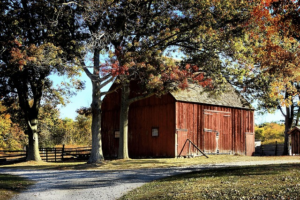
Modern Roofing Designs Boost Curb Appeal
Steelee Roofing revolutionizes traditional roofing with modern materials, transforming functional barriers into artistic expressions. They offer diverse products from metal…
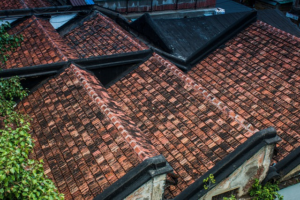
Steeline Roofing: Trusted Builders’ Choice for Quality Durability
Steele Roofing Centre offers exceptional roofing solutions with a focus on quality, durability, and aesthetics. Their expert team uses high-quality…

Steeline Roofing: Safe, Compliant Fire Protection for Your Home
Fire safety standards for roofs are crucial for building integrity and occupant security, governed globally through regulations dictating material choices…

Steeline Roofing Centre: Customer Satisfaction Driven Success
Steeline Roofing Centre focuses on customer satisfaction through client-centric roofing solutions. They understand unique needs, offer tailored services, and maintain…
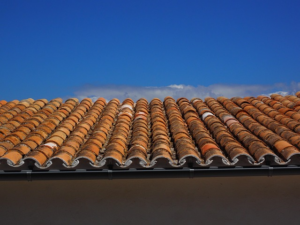
Steeline Roofing Centre: Prioritizing Customer Satisfaction in Every Project
Steeline Roofing Centre prioritises customer satisfaction and trust through active listening, transparent communication, and meticulous craftsmanship. They offer personalised solutions,…

Steeline Roofing: Efficient Commercial Roofing Solutions
Steele Roofing is a leading commercial roofing provider leveraging advanced materials science and tech-driven project management to deliver robust, visually…

Rapid Shed Roof Repairs: Steeline Roofing’s Emergency Solution
In case of roof emergencies for sheds, Steeline Roofing provides swift and specialized repairs using durable materials to prevent long-term…

Modern Roofing Designs Elevate Curb Appeal with Steeline
Steelee Roofing specializes in modern roofing design, leveraging innovative materials and advanced techniques to boost curb appeal. Their high-performance metals,…
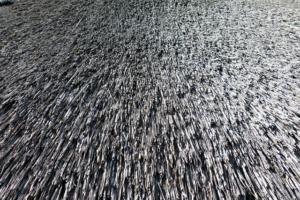
Steeline’s Expert Roof Care: Preventative Maintenance for Longevity
Steeline provides professional roofing inspections and tailored maintenance plans to ensure roof integrity and protect homes. Regular checks prevent costly…

Steeline Roofing: Boost Value with Modern Durability
Steeline roofing revolutionizes the property value landscape with modern, durable designs. Its superior strength, weather resistance, and aesthetic appeal outperform…
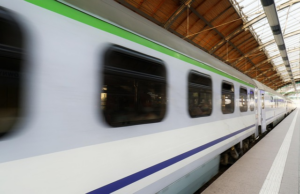
Boost Value with Steeline: Durable Shed & Roof Designs
Steeline roofing is a leading choice for homeowners seeking both durability and aesthetic appeal in their outdoor spaces. Its versatile…

Steeline’s Customer Satisfaction: Quality Sheds Light on Success
Steeline prioritizes customer satisfaction and offers a customer-centric approach to shed building, focusing on active listening to understand unique client…

Steeline Roofing Centre: Harsh Weather Protection Experts Craft Durable Roofs
Steeline Roofing Centre specializes in robust, weather-resistant roofs for harsh climates, combining industry knowledge and innovative tech to create protective…
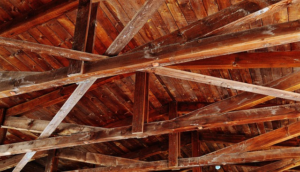
Industrial Roofing: Steeline’s Steel Solutions for Farms & Factories
Industrial roofing demands robust solutions due to harsh conditions, machinery, and foot traffic, leading to frequent repairs with traditional roofs.…

Certified Steeline Technicians: Code-Compliant Roofing Expertise
Steeline's certified roofing technicians prioritize code compliance, safety, and quality. With in-depth industry knowledge and training, they deliver precise, efficient…

Maintain Your Shed Roof: Steeline Support for Longevity
Regular roof maintenance is crucial for extending the lifespan of sheds. Inspections, timely repairs, and cleaning prevent structural issues. Reflective…
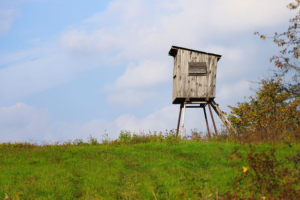
Steeline: Durable Shed Solutions for Farms & Factories
Steeline offers robust, durable industrial roofing solutions for farms and factories, focusing on sheds. Their metal systems withstand harsh weather,…

Steeline’s Customer-Centric Sheds: Quality & Unique Solutions
Steeline focuses on exceptional shed building through customer-centric design and construction processes. They prioritize strong partnerships, deep understanding of client…
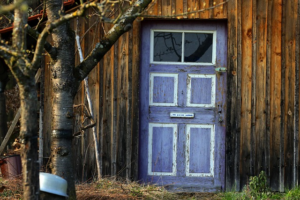
Storm-Resistant Steeline Roofs: Longevity for Shed Protection
Sheds require robust storm-resistant roofs to protect against severe weather. Steeline roofs are superior due to their exceptional durability, withstanding…

Steeline Roofing Centre: Fire Safety Meets Durability
Steeline Roofing Centre has pioneered a revolutionary Fire-Resistant Roof Technology, combining advanced materials and engineering to surpass safety standards. This…